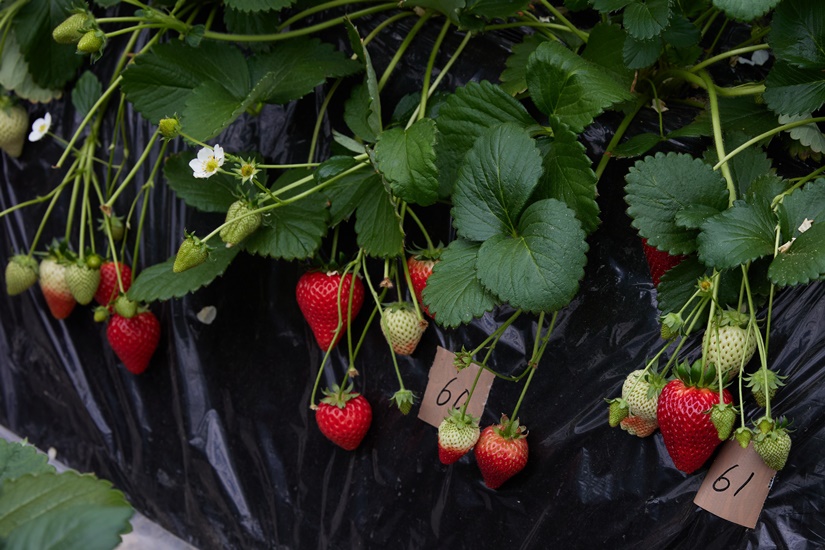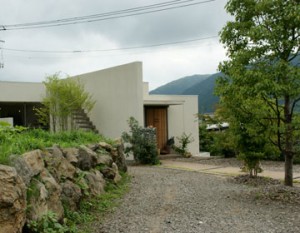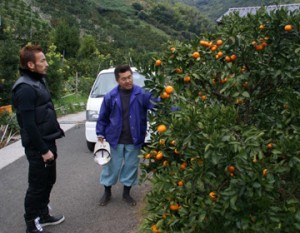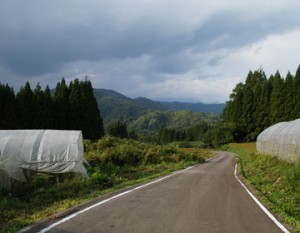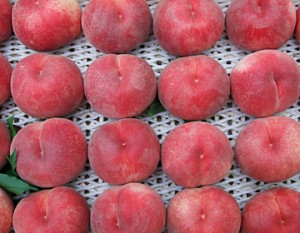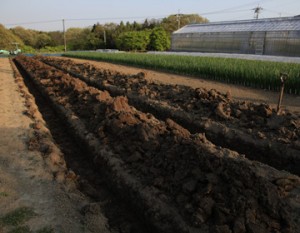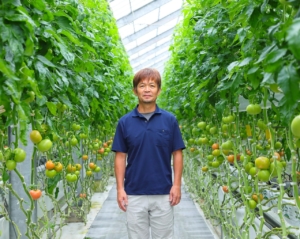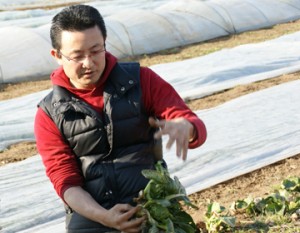Tochigi Prefecture has reigned as the nation’s top strawberry producer for 55 consecutive years since 1968. It now calls itself the “Strawberry Kingdom of Tochigi,” and has become a nationally renowned strawberry production area. Why has strawberry production continued to develop so well in Tochigi Prefecture? We visited the Strawberry Research Institute of the Tochigi Prefectural Agricultural Research Center to find out.
Translated with DeepL.com (free version)
A research institute specializing in strawberries that produced “Tochiotome” and “Skyberry
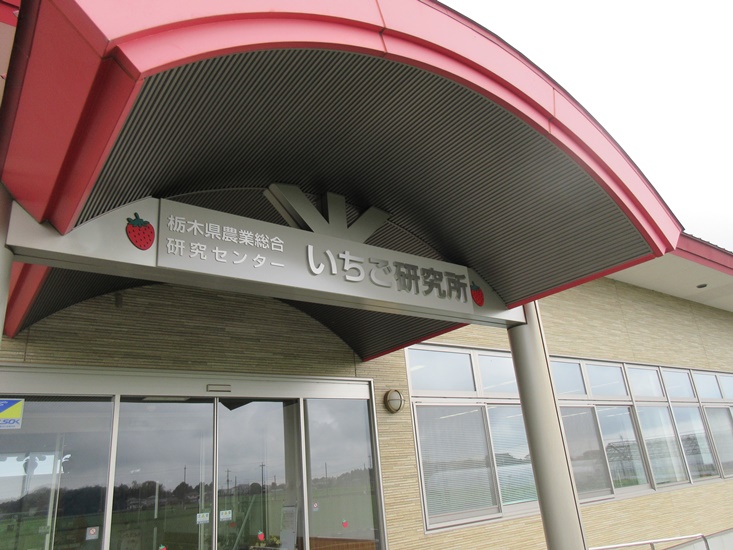
It is a 45-minute drive south of Utsunomiya City in the central part of the prefecture, the prefectural capital. The Strawberry Research Institute is marked by a red roof visible in the rich countryside. This facility became a research institute specializing in strawberries in 2008. Until then, it was a branch of the Agricultural Experiment Station in Utsunomiya City that conducted research on several crops, including strawberries, but when an organizational review was conducted, it was reborn as the only research institute specializing in strawberries in Japan, operated by the prefecture.
The institute has two major functions: one is to conduct marketing research and analysis of strawberry-related distribution and consumer trends, and the other is to research and develop new varieties and cultivation methods and techniques.
Including the Institute’s predecessor organization, the history of the Institute is more than 50 years, starting with the development of the “Nyoho” variety in 1985, and continuing to the present, with the prefecture having developed 10 varieties. The Tochiotome, which is famous throughout Japan, and the Skyberry, which is suitable for gift-giving, are just a few of the varieties that can only be enjoyed at tourist strawberry farms. Tochigi’s strawberry lineup is diverse, including “Tochihime,” which can only be enjoyed at tourist strawberry farms, “Natsuotome,” which can be harvested in summer and fall, and “Milky Berry,” which is a white fruit. And now, “Tochiaika,” born in 2018, has grown to become the future of the “Strawberry Kingdom of Tochigi.
How did Tochigi Prefecture become the best strawberry producing area in Japan?
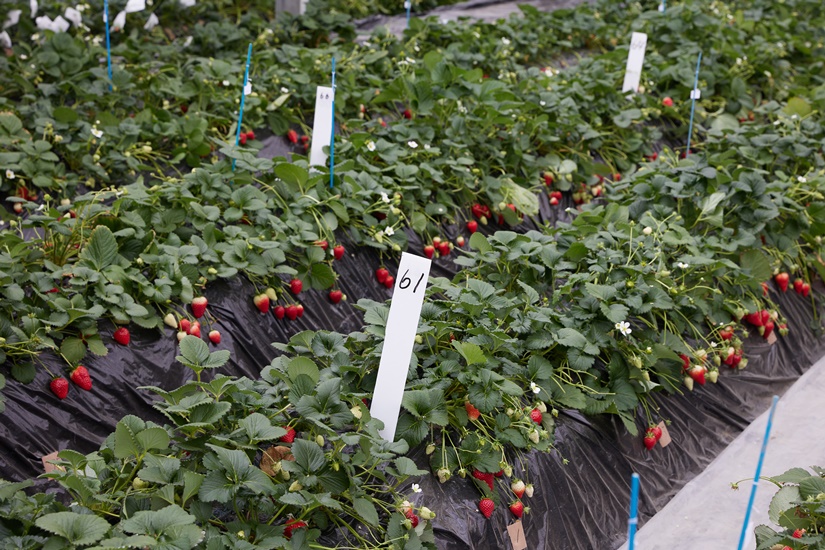
Why did strawberry cultivation become so popular in Tochigi Prefecture in the first place? Looking at the ranking of strawberry yields in order from second place down, we find Fukuoka Prefecture, famous for “Amaou,” Kumamoto Prefecture with “Yubeni” and “Koi Minori,” Aichi Prefecture with many varieties developed in other prefectures, such as “Tochiotome” and “Shohime,” and Nagasaki Prefecture with the majority of “Yumenoka” cultivated in the prefecture. Many areas have relatively mild climates, and the climatic conditions appear to be different from those of Tochigi Prefecture, which is cold and harsh even in the Kanto region.
It is said that strawberries were first introduced to Nagasaki from the Netherlands at the end of the Edo period. However, they did not spread quickly, and it was not until the Meiji period (1868-1912) that full-scale cultivation began. However, strawberries were a luxury item at the time, and it was not until the Showa period (1926-1989) that they became accessible to the general public. At that time, strawberries were mainly grown outdoors in open fields, and the harvest season was limited to early summer from May to June.
It was only after the war that Tochigi Prefecture expanded strawberry production. In order to increase farmers’ profits, someone paid attention to strawberries as a crop that could be used as a back crop for rice. That person was Ichiro Niida, a member of the town council of Mikuriya Town (present-day Ashikaga City). At the time, the northern limit of strawberry cultivation was in Kanagawa Prefecture, and it was thought to be difficult to grow strawberries in Tochigi Prefecture. He made numerous trips to Shizuoka and Kanagawa prefectures, which were advanced strawberry cultivation areas, to study the cultivation methods suitable for the environment of Tochigi Prefecture, despite repeated failures. Over a period of nearly 10 years, he succeeded in expanding the cultivation in the 1960s. He expanded shipments to Tokyo, Hokkaido, Niigata, and other areas.
When greenhouse cultivation was not yet widespread, strawberries were in season from spring to early summer. Mr. Nieda also took on the challenge of accelerating the harvest season. In autumn, when the days are short and the temperature drops, the strawberry puts forth flower buds, which are the source of flowers, and when it gets colder, they go dormant. Then, after a certain period of low temperatures of 5°C or less, they wake up from dormancy and bloom and bear fruit in the spring when the temperature rises. The cold season was also important for strawberry cultivation. At the time, however, this was before the widespread use of greenhouse cultivation, in which the temperature could be mechanically controlled. In such a situation, Mr. Nieda and his colleagues tried “Koureichi Ikubyo,” a method of bringing seedlings to high altitude and cold regions such as Senjogahara in Nikko during summer and fall. By bringing the seedlings to colder temperatures earlier than before, they were able to put on flower buds earlier, thereby accelerating the harvest period. This would also boost the farmers’ profits. The challenge bore fruit, and strawberries, which were previously harvested in May and June, were successfully shipped earlier in the year. In addition, in the mid-1960s, it became possible to grow strawberries in plastic greenhouses, which also helped to expand production.
Originally, strawberries were a fruit of early summer. Later, through research into cultivation techniques and the continuous improvement of strawberry varieties, the shipping season has moved even earlier, and strawberries now have the image of a winter fruit. It is believed that the earlier shipping season is due in large part to the Christmas season, when demand for cakes is at its peak. Our predecessors continued to respond to the needs of the market in order to contribute to farmers’ profits. The result of their efforts may be the bright red strawberries shining on Christmas cakes.
The climate suitable for growing strawberries and their creators
Thanks to the efforts of Mr. Nieda and others, the foundation for strawberry cultivation in Tochigi was laid. The institute says that the natural environment of Tochigi Prefecture is suitable for strawberry cultivation.
Tochigi Prefecture has long hours of sunlight in winter, and the abundant light is essential for strawberry cultivation. In addition, the fertile land nurtured by high-quality groundwater from the Nikko mountain range and other mountains is also suitable for strawberry cultivation. The large temperature differences between summer and winter, and between morning and night, are also believed to enhance the sweetness of strawberries.
In addition to these climatic conditions, the institute also attributes the growth of strawberry cultivation to the “honest and serious” nature of the farmers in the prefecture. Each strawberry is harvested by hand to determine the degree of ripeness and shape, and to avoid damaging the berries. The beautiful strawberries on store shelves are the result of the diligent work of the growers. The patience and care of the growers are essential to continue growing and shipping a large number of strawberries.
The long road to developing new Tochigi strawberries
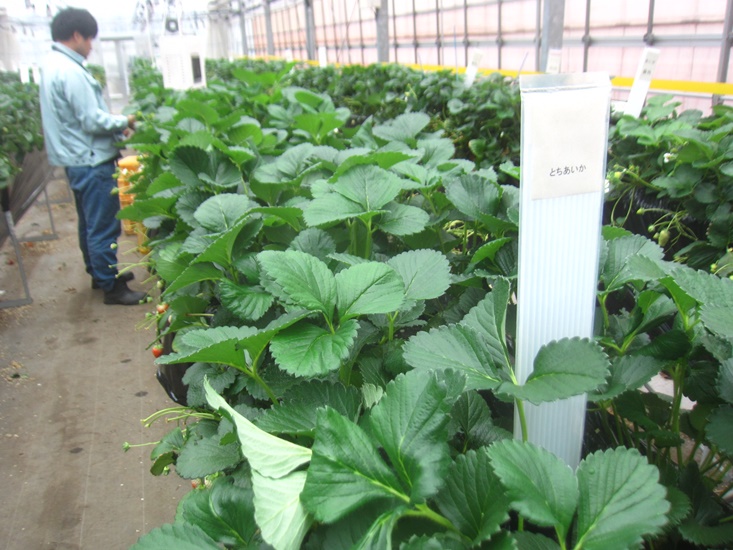
Strawberry breeding is a major role of the institute. In the greenhouses on the premises, research is conducted to create new varieties by crossbreeding varieties with various characteristics. In breeding, the center focuses on the following points: sweetness and taste, abundant harvest, and resistance to disease. On top of that, it is also important to have “sweet and tasty” taste, “firm fruit that is not easily damaged during the distribution process until it reaches the store shelves,” and “long shelf life in the store shelves. The new variety “Tochiaika” was completed in 2018 after meeting these requirements. The ease of cultivation for farmers, combined with its low acidity and pronounced sweetness, has resulted in the new Tochiaika variety now accounting for more than 60% of the prefecture’s total acreage, surpassing Tochiotome, which had held the top spot for many years.
Tochiaika” is also an elite company that has passed through a rigorous selection process.
If a so-called “good variety” could be developed, it would greatly contribute to the development of strawberries in Tochigi Prefecture. However, it takes at least seven years to bring a new variety to the market. For example, a sweet variety may be crossed with a disease-resistant variety, or with a variety that produces a high yield, and the crossbreeding patterns vary. The staff members repeatedly select the strawberries they grow, and only those varieties that have passed the selection process are allowed to be released to the public. For example, in the first or second year of cultivation, the staff members in charge of strawberry production actually look at and taste each variety to select the best ones. Moreover, since the taste of strawberries changes depending on the season in which they are grown, they must also pass an overall evaluation that takes into account seasonal changes in taste. The development of strawberry varieties, like the cultivation of strawberries by farmers, is a continuous and steady process.
Soil Cultivation and Upland Cultivation. The Need for Technology in Strawberry Cultivation
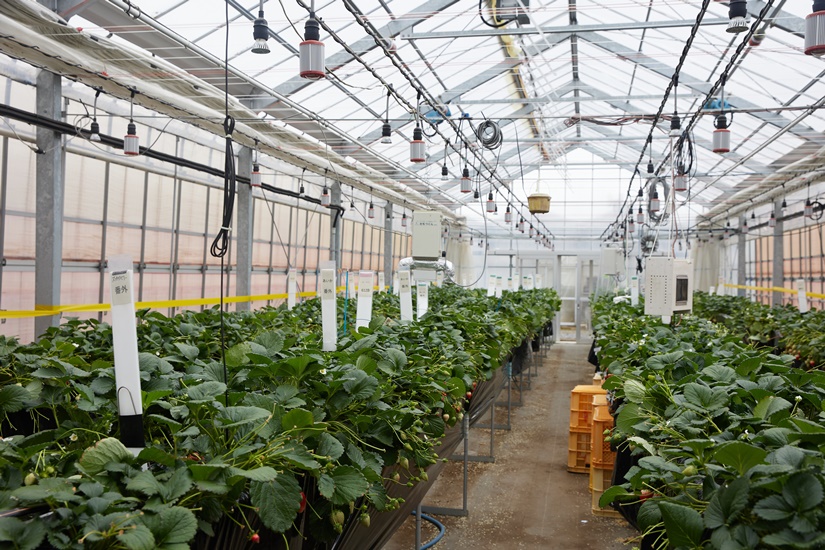
The institute is also developing strawberry cultivation technology. Most of the strawberry cultivation in greenhouses is divided into “soil cultivation,” in which strawberries are grown on the ground, and “elevated cultivation,” in which strawberries are grown on benches about one meter high. Although “upland cultivation” has the advantage of freeing farmers from the physical burden of bending at the waist while harvesting, many farmers in Tochigi Prefecture choose “soil cultivation” due to concerns about the cost of introducing this method. There is also a persistent view that “soil cultivation” has a better effect on flavor, based on the belief that soil absorption of soil components and soil temperature are more stable. However, the institute believes that by controlling the environment, strawberries of the same quality as those grown in soil cultivation can be grown in upland cultivation, and that there are also advantages to manualizing cultivation methods that tend to become impersonal.
In the greenhouses of the elevated cultivation system, a CO2 generator to promote photosynthesis and an automatic ventilation system that monitors air temperature, humidity, and soil temperature are installed. The company is also conducting research on the best way to use each type of equipment for each variety, and is using this research to provide advice to farmers who are planning to install such equipment. The laboratory, which believes that “the latest technology is necessary for the future of strawberry cultivation,” is playing a key role in laying the groundwork for such technology.
The Future of Tochigi, the Strawberry Kingdom
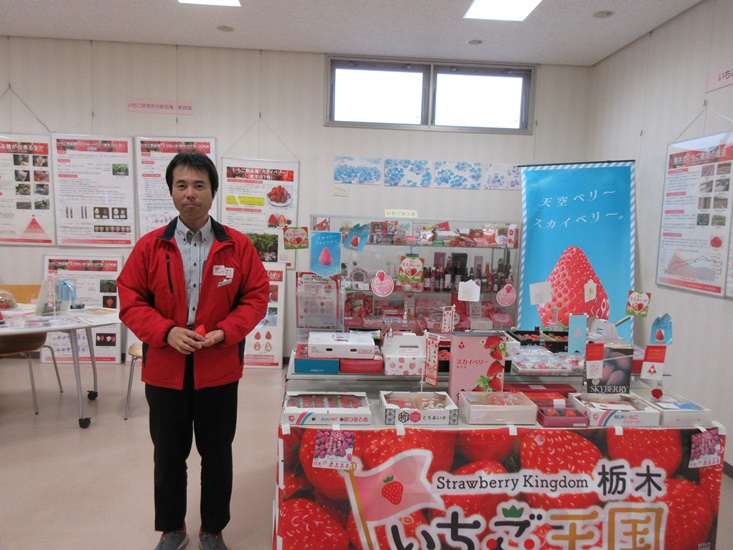
All of us at the institute are committed to producing a better strawberry variety every year that surpasses all previous varieties,” says Mr. Mitsui, a special researcher at the institute. Even so, it is very difficult to produce a variety that surpasses the “Tochiaika” variety, he says. It is absolutely necessary to produce a variety with a good balance of sweetness and acidity for consumers, and also to be able to produce large quantities in order to increase the profitability of producers. Combining this with other factors such as disease resistance and resistance to bruising, it will be a more difficult road to achieve a level beyond the current “Tochiaika” level. Nevertheless, the staff members never give up and continue their research diligently every year. Their goal, now and in the future, is to “produce more attractive strawberries, increase the profitability of farmers, and encourage young people to participate in strawberry cultivation. They also have a goal of focusing on exporting their products overseas in the future.
It is not always possible to produce new varieties during their tenure. Even so, they will continue their research for decades, keeping their technology and thoughts connected. There will be challenges to overcome in the future, such as the aging of the population, the decrease in the number of producers due to population decline, climate change, and changes in consumer trends. Nevertheless, there are many people here who have inherited and developed the foundation of strawberry cultivation that Ichiro Nieda once painstakingly built. They are committed to the farmers and to producing strawberries that will please consumers. As long as these people exist, the future of the “Strawberry Kingdom of Tochigi” is bright.



